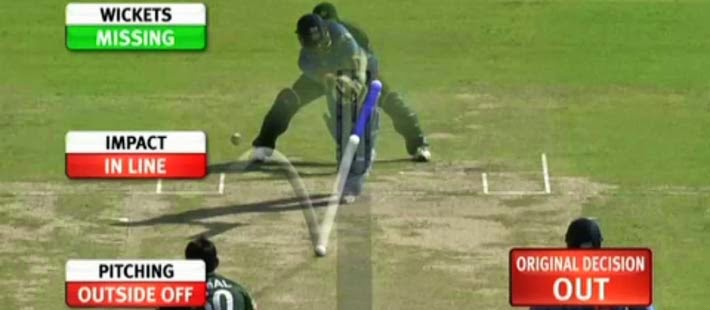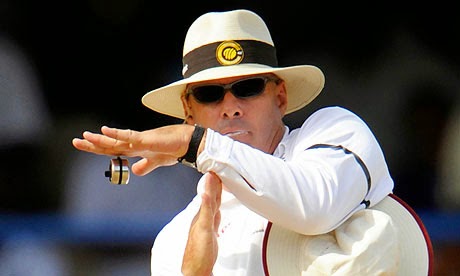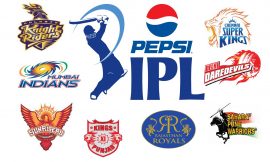Everything has its own pros and cons. This applies to technology also.The growing use of technology in cricket has made it a wholesome experience for the TV viewers ,All these technologies are gifted by science to the game of cricket but there is also debate going on over use of technology to aid umpiring decisions has much to do with the need for cricket to “grow up” and flow with the times.
The stats from the most recent World Cup, in 2015, showed that around 28% of referrals resulted in the on-field umpire’s decision being overturned, yet it seems counter-intuitive to attempt to increase the standard of umpiring by diminishing their responsibility.

Cricket is like a tradition now in many countries and all the traditions have certain things, which should not be touched upon or altered. Cricket has always had umpires who take the final decision. Good Umpires make correct decisions based entirely upon intuition, past observations of pitch and players, and experience of playing and watching the game.Just changing it simply doesn’t solve the purpose. Even if a decision is wrong, it should be respected and also accepted like how it has been happening over the years.
.jpg)
With the umpires coming under closer scrutiny than ever before with the Hawk-eye, slowmos and super slowmotions, and what have you, virtually every decision of theirs comes under the hammer. Strangely, few care to appreciate that the umpires have to make do without the benefit of replays, and as such, there is always the element human error that is omnipresent, especially with regard to leg-before decisions.
The Umpire Decision Review System (UDRS or DRS) has been one of the most widely debated topics in the cricketing world because of the controversies generated in recent times over accuracy of the technology. Even the inventors of hawk-eye have been honest to admit that there is some fuzziness to the ball trajectory that the simulation depicts.

The point is that technology will certainly benefit cricket so long as the teams do not misuse the provisions in the name of gamesmanship or to slow down the game. Of course, it would be a pity that cricket might stand to lose its “human touch” with the umpires taking recourse to replays rather than deliver a decision that might be questioned.
So much time is wasted by officials, players, administrators and fans discussing tweaks to DRS that a radical overhaul of the system is needed. It should be stripped of all technology – not just HotSpot, Hawk-Eye and Snicko, but enhanced volume, slow-motion, high-definition zooms and even replays – which all add complications and are unnecessary for spotting the howler. Let’s also take control of the system away from the field of play. Rather than giving the players reviews, the third umpire should be able to interject at his own discretion when he is certain an error has been made

Perfection can be rather boring, and cricket’s charm lies as much in feats of batting and bowling as umpiring decisions, right or wrong. I have nothing against technology in sport so long as the sport is not reduced to being its slave as we are increasingly becoming in our everyday life. But then, is this wishful thinking, I wonder.
From the ongoing Cricket Matches, what I have noticed is that many times this technology is unnecessarily used. Even if the batsman is clearly out, still the review is called for thereby wasting a lot of time. Even if there is no need for the review, the team still calls for it. I think this has made a mockery of the complete system.
Lastly, let cricket retain its human element as it adds to the game’s beauty. Let us wait for better substitutes to come and then let the powers decide. Long live the game!





Hello Web Admin, I noticed that your On-Page SEO is is missing a few factors, for one you do not use all three H tags in your post, also I notice that you are not using bold or italics properly in your SEO optimization. On-Page SEO means more now than ever since the new Google update: Panda. No longer are backlinks and simply pinging or sending out a RSS feed the key to getting Google PageRank or Alexa Rankings, You now NEED On-Page SEO. So what is good On-Page SEO?First your keyword must appear in the title.Then it must appear in the URL.You have to optimize your keyword and make sure that it has a nice keyword density of 3-5% in your article with relevant LSI (Latent Semantic Indexing). Then you should spread all H1,H2,H3 tags in your article.Your Keyword should appear in your first paragraph and in the last sentence of the page. You should have relevant usage of Bold and italics of your keyword.There should be one internal link to a page on your blog and you should have one image with an alt tag that has your keyword….wait there’s even more Now what if i told you there was a simple WordPress plugin that does all the On-Page SEO, and automatically for you? That’s right AUTOMATICALLY, just watch this 4minute video for more information at. Seo Plugin
One of our visitors not too long ago recommended the following website
Thanks so much for this, keep up the good work 🙂